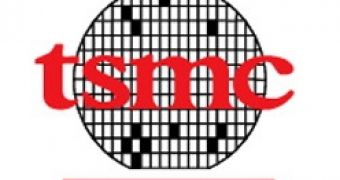Taiwan Semiconductor Manufacturing Company (TSMC) is said to first install a multiple-electron-beam direct write (MEBDW) lithography system in 2009, which would help it in the development of 20nm and more advanced process nodes, as Digitimes reports citing Burn Lin, senior director of micropatterning division at TSMC.
In October, TSMC and Mapper Lithography signed an agreement which states that Mapper will ship its first 300mm multiple-e-beam maskless lithography platform for process development to TSMC, which allows the company to plan the installment of the MEBDW system. It seems that Lin made the remarks on the company's plans at the first SPIE Lithography Asia conference held in Taiwan on November 4-6.
Other news on TSMC unveiled the fact that the company made enhancements to its 0.13-micron process technology, which makes a 1.5/6/32V technology targeting high resolution mobile handset display drivers immediately available. The high-yield process sports an aluminum copper (AlCu) backend metal scheme and is meant to operate energy reductions while also offering smaller line width options, along with the reduction of die size in next-generation high-resolution display driver ICs.
The development of a next-generation of portable displays that feature high resolution and excellent power performance is driven by the growing popularity of mobile TV and Internet browsing. Through the new 1.5/6/32V technology, both a cut in die size and the delivery of high drive voltages needed on the smaller 0.13-micron geometry are possible.
According to TSMC, the new process is very compact and is able to offer the smallest SRAM bit cell of any commercial foundry, while the speed and stand-by power are not affected in any way. The core voltage under-drive range, at 1.2V, it can provide is meant to meet the most stringent green panel requirements. Moreover, being an innovative new fuse implementation, it also simplifies display optimization and matching during production testing.

 14 DAY TRIAL //
14 DAY TRIAL //